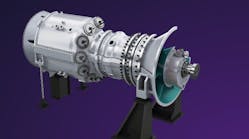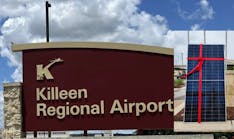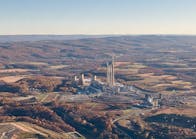LG Energy Solution allocating $5.5B for Arizona Battery Manufacturing complex
In the latest of a series of moves bringing energy storage production capacity into the U.S., South Korea utility-scale and e-mobility battery supplier LG Energy Solution (LGES) has announced plans to invest around KRW7.2 trillion (about $5.54B U.S., at current exchange rates) to build a battery manufacturing complex in Queen Creek, Arizona.
The complex will comprise two facilities, one for cylindrical batteries for electric vehicles (EV) and the other for lithium iron phosphate (LFP) pouch-type batteries for energy storage systems (ESS).
LGES claims this is the largest investment ever made for a stand-alone battery manufacturing facility in North America and is four times the amount initially announced by the company last year.
The investment will be divided into KRW4.2 trillion for the cylindrical battery manufacturing facility with a capacity of 27 GWh, and KRW3 trillion for the LFP pouch-type battery facility with a capacity of 16 GWh. The two facilities, totaling 43 GWh, are scheduled to break ground this year.
Earlier this year, LG and Honda Motor announced a joint venture with plans to build a $4.4 billion L-H Battery Co. joint venture manufacturing plant in Ohio. Others which have detailed new manufacturing for EV and utility-scale battery production within the domestic supply chain include Cirba, Panasonic Energy, Microvast, FREYR, AESC, Stallantis, Samsung and Factorial Energy.
See our full coverage of Battery Manufacturing announcements in EnergyTech
For its part, LG Energy Solution says it decided to increase its investment in cylindrical EV battery production in North America in an effort to meet the rising demand from EV makers for locally manufactured high-quality, high-performance batteries and comply with the Inflation Reduction Act’s EV tax credits. The IRA details credits are available only to e-mobility products with a certain percentage made inside the U.S.
LGES notes that the new manufacturing complex will allow it to increase its production capacity in key product segments, develop closer partnerships with customers in both EV and ESS sectors, and reduce logistics costs by bringing its manufacturing facilities closer to its customers.
The new cylindrical battery manufacturing facility is expected to start mass production of 2170 cells in 2025, mainly for EV makers in North America, while the LFP pouch-type battery facility is set to start production in 2026.
LGES plans to utilize a smart factory system for its new manufacturing facilities to enhance product quality, increase yield, improve manufacturing processes and boost productivity.
“Our decision to invest in Arizona demonstrates our strategic initiative to continue expanding our global production network, which is already the largest in the world, to further advance our innovative and top-quality products in scale and with speed,” said Youngsoo Kwon, CEO of LG Energy Solution. “We believe it’s the right move at the right time in order to empower clean energy transition in the U.S.”
LG Energy Solution is a spinoff of global firm LG Chem.





